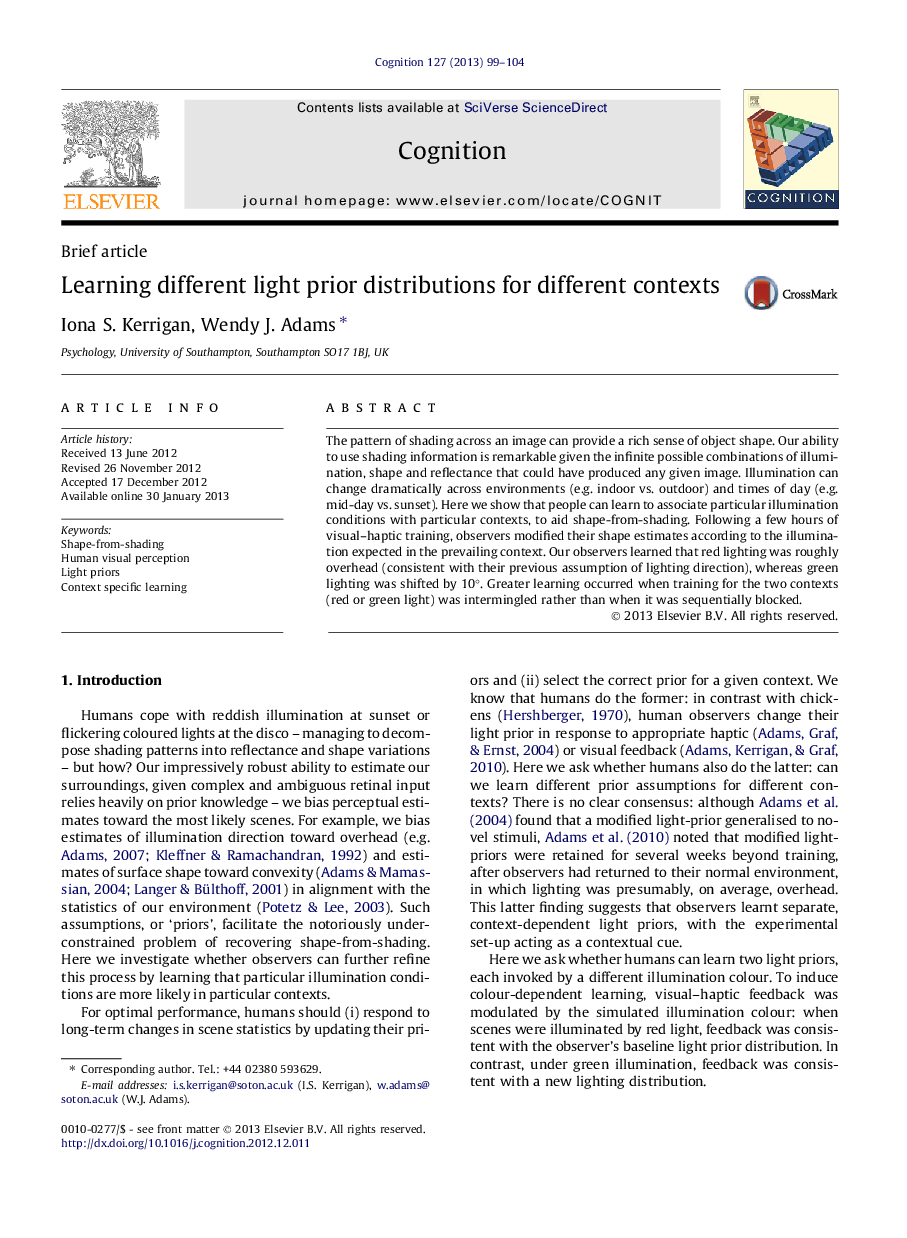| Article ID | Journal | Published Year | Pages | File Type |
|---|---|---|---|---|
| 10457642 | Cognition | 2013 | 6 Pages |
Abstract
The pattern of shading across an image can provide a rich sense of object shape. Our ability to use shading information is remarkable given the infinite possible combinations of illumination, shape and reflectance that could have produced any given image. Illumination can change dramatically across environments (e.g. indoor vs. outdoor) and times of day (e.g. mid-day vs. sunset). Here we show that people can learn to associate particular illumination conditions with particular contexts, to aid shape-from-shading. Following a few hours of visual-haptic training, observers modified their shape estimates according to the illumination expected in the prevailing context. Our observers learned that red lighting was roughly overhead (consistent with their previous assumption of lighting direction), whereas green lighting was shifted by 10°. Greater learning occurred when training for the two contexts (red or green light) was intermingled rather than when it was sequentially blocked.
Related Topics
Life Sciences
Neuroscience
Cognitive Neuroscience
Authors
Iona S. Kerrigan, Wendy J. Adams,
